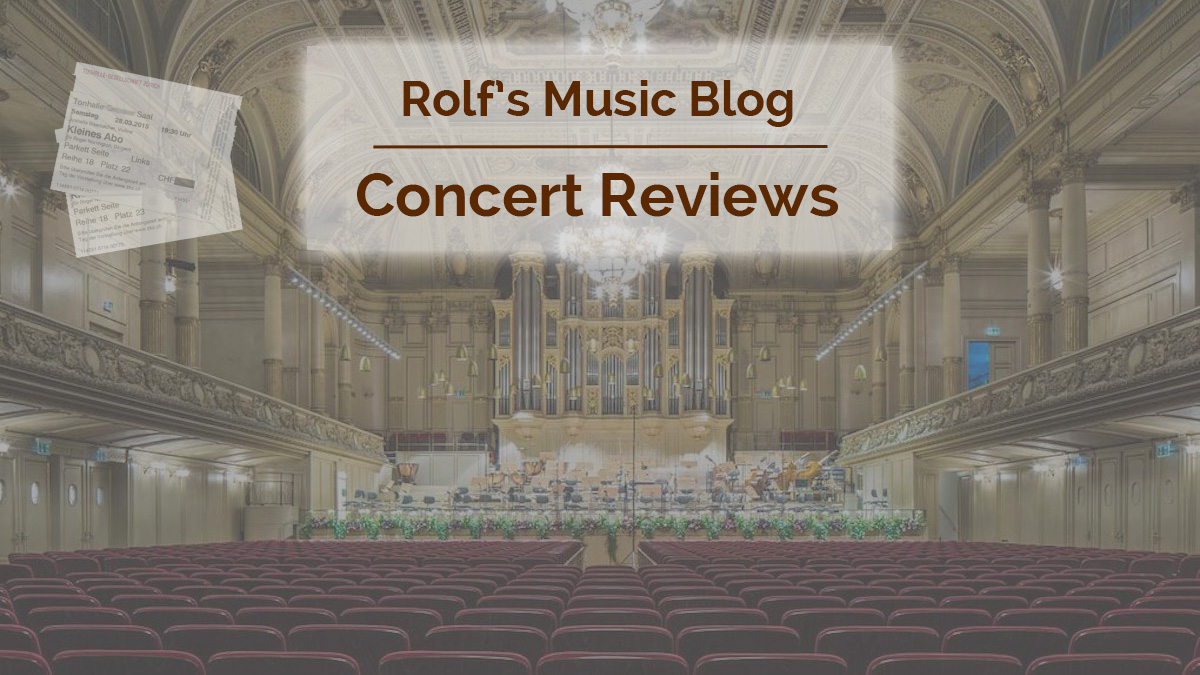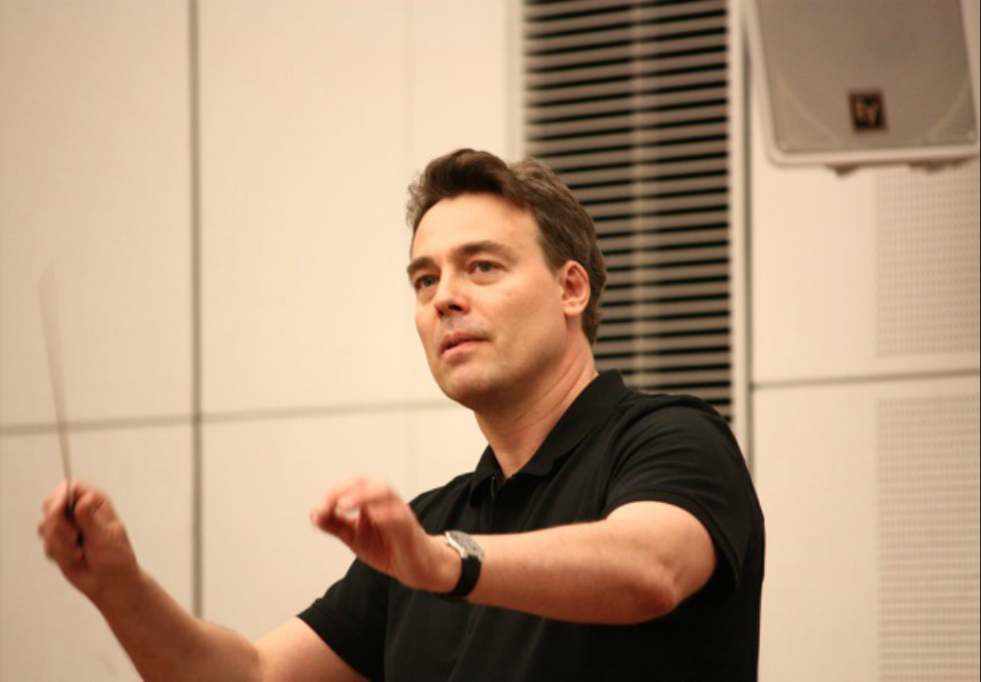Alexei Volodin, NWD Philharmonie / Yves Abel
R. Schumann, S. Rachmaninoff, M. Glinka
Tonhalle Zurich, 2015-10-17

2015-10-21 — Original posting
2016-08-11 — Brushed up for better readability
Table of Contents
- Introduction — Orchestra & Conductor
- Program & Review
- Addendum 1
- Addendum 2
Introduction — Orchestra & Conductor
The NWD Philharmonie (Nordwestdeutsche Philharmonie), founded 1950, is based in Herford. It is one of three “Landesorchester” (State Orchestras) of Nordrhein-Westfalen, with about 80 full-time members.
Since January 2015, the Franco-Canadian Yves Abel (born 1963) is Chief Conductor of the orchestra. Abel’s main field of activity in the past was with opera, e.g., from 2005 – 2011 he was First Guest Conductor at the Deutsche Oper Berlin.
In this concert, I found the orchestra to be well-balanced, with nice, homogeneous string sound, aptly led by the young & alert concertmaster, Sabrina-Vivian Höpcker. Actually, it was nice to see that the orchestra featured a well-balanced gender mix. The instruments were modern ones (as one would expect for the Rachmaninoff, of course). The one exception (as far as I could see) were the drum sticks with wooden heads for the Schumann symphony.
For an average / typical symphony concert one would normally expect an opening with a short piece (such as an overture), followed by a concerto (with one or several soloists), and after the intermission a major symphonic composition. This concert inverted that sequence — for rather pragmatic reasons, as we will see.
Program & Review
Robert Schumann (1810 – 1856): Symphony No.1 in B♭ major, op.38
So, the concert started with the Symphony No.1 in B♭ major, op.38 (“Spring Symphony”) by Robert Schumann (1810 – 1856).
I. Andante un poco maestoso — Allegro molto vivace
Yves Abel ignored the composer’s metronome marks in the introduction, for which he chose a slow, broad pace. One may interpret this as Maestoso — however, the annotation is Andante un poco maestoso (i.e., a slightly majestic walking pace), which this definitely wasn’t.
Throughout the symphony, Abel showed a very liberal way of reading the tempo annotations in the score, e.g.: towards the end of the introduction, at the descending staccato scale on the flute, Schumann writes un poco ritardando. Abel first accelerated, just to do a rather strong ritardando thereafter. Also, several times I noticed that when the score reads a tempo, Abel continues at the preceding pace and only starts to accelerate.
In contrast to the introduction, the following Allegro molto vivace section (the actual sonata form, with repeated exposition) was relatively brisk. The orchestra sound was compact, the articulation rather legato than aimed at lightness, clarity and transparency. Overall, the movement sometimes felt a bit superficial, almost pushed or rushed, often lacking or losing details. On the other hand, prior to the final build-up, the middle part of the Coda was rather too broad and effusive — hardly justifiable from the score.
II. Larghetto
The second movement, Larghetto, felt relatively heavy, sumptuous, often with rather impasto sound. That slow movement ends with a general rest, thereafter the Scherzo is to be played without interruption (attacca). This attacca wasn’t — though this wasn’t the conductor’s fault, but Murphy’s law! Exactly at the general rest, after the music ended in solemn silence, a mobile phone in the audience enforced a prolonged break. That’s an apparently inevitable, unpleasant side-effect of modern mobile communications onto current concert life.
III. Scherzo: Molto vivace — Trio: Molto più vivace
The subsequent Scherzo (Molto vivace) was fluent, the articulation again often superficial. I also missed decent agogics — e.g.: it would have been so nice to hold back the flow for (very short) moments prior to a sforzato. I also found the first, relatively fast Trio (Molto più vivace) somewhat superficial. The movement then returns to the original pace (Tempo I), then there is a second Trio, without extra annotation in the score. Strictly speaking, one ought to play this in the tempo of the initial Scherzo part, i.e., Tempo I. It is quite common that conductors take that Trio somewhat faster, though. Abel took it very fast, to a point where there was no time for articulation and phrasing. On the other hand, the beginning of the Coda was very slow.
IV. Allegro animato e grazioso
Tempo issues (for me) continued in the final movement (Allegro animato e grazioso): I failed to understand Yves Abel’s concept, e.g.: I found the accelerating pace after an a tempo exaggerated, and the same applies to the secondary theme with its strange / interesting staccato melody in the wind section. This was considerably faster, while in compensation, the string interjections were very broad. To me, all this felt arbitrary and again exaggerated. Moreover, I sometimes was reminded of the nonchalance of certain Viennese compositions by Johann Strauss. But I can’t imagine that Robert Schumann intended to write music for pure entertainment.
Overall, Yves Abel’s interpretation of this symphony felt traditional, romantic and arbitrary. It was certainly far away from historically informed playing. My main objections are (obviously) with the tempo, but also related to frequent superficiality in the articulation and phrasing.
Sergei Rachmaninoff (1873 – 1943): Piano Concerto No.3 in D minor, op.30
The core piece (at least concerning the length / duration) followed after the intermission: the Piano Concerto No.3 in D minor, op.30 by Sergei Rachmaninoff (1873 – 1943).
Alexei Volodin
Soloist in this concerto was the Russian pianist Alexei Volodin, born 1977 in Leningrad / Saint Petersburg. He received most of his formal education at the Gnessin Academy in Moscow, and from the Moscow Conservatory, where he studied with Eliso Virsaladze. His artistic break-through came with the first prize at the Géza Anda Competition 2003 in Zurich.
Rachmaninoff’s op.30 allegedly is the concerto with the most notes per time unit (on average) in the piano part. That evening, Volodin gave the impression of wanting to prove that he can play those many thousand notes relatively swiftly, and without the audience noticing the towering difficulties in this cornerstone and benchmark in the piano repertoire. His pianistic abilities are enormous, his playing / keyboard touch extremely smooth and fast, but unfortunately neither clear nor transparent.
I did not see the pianist’s feet in action, but I had the impression that he was using the sustain pedal almost all the time. In my opinion, this composition does not mandate turning out the extreme keyboard virtuoso (even though one can find even faster performances). The work isn’t devoid of lyrical aspects. But the way Volodin played it, it was impossible for the listener to capture the fine, delicate and fascinating details of the piano score.
I. Allegro man non tanto
Also, the orchestral accompaniment often sounded loud and rather dull. This didn’t help following the solo part. Shortly after [11] in the score, where the lyrical piano cantilena from the beginning returns, the horns take part in a pianissimo accompaniment. That’s tricky: too much of a challenge, apparently, as the low D oddly stood out forte for an entire bar — to me, a clear mishap. I would have assumed that a professional orchestra would avoid such incidents (e.g., by shifting the note to the higher octave if the lower note proves unplayable pp), or at least (if it was accidental) the musician would abort immediately.
Cadenza
Rachmaninoff wrote a monstrous cadenza to this movement, with enormous pianistic difficulties / challenges. It is so difficult that he later replaced it with a simpler version. Pianists who want to show off their abilities will of course select the original cadenza. This is now included in the score as alternative, ossia version. Needless to say that Volodin selected the more difficult ossia cadenza — played very impressively, setting off orchestral powers from the Steinway D — but unfortunately (in line with the rest of his interpretation) again rarely, if ever clear and transparent.
Throughout the entire movement, I also found it a pity that Volodin did not give the nice cantilena of the initial theme its proper space. At the fast pace in this interpretation it would have been well worth to let that melody stand out a bit, by gradually taking back the tempo, holding back the notes a tiny bit.
II. Intermezzo: Adagio
The second movement is an Intermezzo. The annotation is Adagio, which — a common mistake — was slow, rather than calm. On the bright side, I really liked the lyrical passages in the solo part, where Volodin wonderfully let the melody in the middle voice sing and flourish. But the movement also features plenty of denser, virtuosic segments. Those were again blurred by an excess of sustain pedal. Together with the orchestral accompaniment, the audience merely heard sonic mush. Not unexpectedly, the tarantella-like sequence in the latter part of the movement was super fast. It displayed great agility — sadly barely noticed, even hardly noticeable.
III. Finale: Alla breve
The interpretation of the last movement (Alla breve) was again not ideal. The solo part was often pushed, full of unrest. In the Scherzando section, lots of details got lost / rushed over. Changes in tempo felt arbitrary and exaggerated. At [64], the score features a rhythmically intricate Più mosso section that often tends to fall apart (the last movement in Jan Sibelius’ violin concerto includes similar challenges!). Here, that section was rushed over too quickly. It felt as if the artists wanted to run away from uncertainties in the coordination between solo and orchestra. Or maybe, he wanted to make them drown in the general rush? Overall, I asked myself: what is the purpose of all that myriad of notes in Rachmaninoff’s score, if it all mingles up to an undifferentiated mush?
Encore — Sergei Rachmaninoff: Prélude No.12 in G♯ minor, op.32/12
The applause was almost frenetic. In my opinion, it was not entirely justified. But at least, the interpretation seemed to have satisfied those who wanted to “take a sound bath”. Alexei Volodin responded to the applause with an encore, Prélude No.12 in G♯ minor (Allegro), from the 13 Préludes, op.32, again by Sergei Rachmaninoff. This now I found well-played, with appropriate pedaling… and not obscured by accompaniment.
Mikhail Glinka (1804 – 1857): Overture to “Ruslan and Lyudmila”
That brings us to the “inverted overture” of the concert. The Overture to the Opera “Ruslan and Lyudmila“ by Mikhail Ivanovich Glinka (1804 – 1857) is a highly virtuosic showpiece for orchestras. And it is popular for exactly that reason. Here, this worked like an “official / programmed encore”, if not as a bouncer piece. Quite obviously, this composition has received intense rehearsing, if not extended drills! The playing was excellent, not excessively fast, but clear, and with very good coordination throughout the orchestra. It was the best performance of the evening, without any doubt.
Had this really been the beginning of the evening, the overture, as by the composer’s intent, it would have made a nice splash. But that performance would long have been lost in people’s mind after the two other works of the evening. This way, the concertgoers left the audience with the lively memory from a little orchestral feat.
Addendum 1
For the same concert, I have also written a (much shorter) review in German for Bachtrack.com. This posting is not a translation of that German review, the rights of which remain with Bachtrack. I create the German review using a subset of the notes taken during this concert. I wanted to enable my non-German speaking readers to read about my concert experience as well. Therefore, I have taken my original notes as a loose basis for this separate posting. I’m including additional material that is not present in the Bachtrack review.
Addendum 2
See my earlier posts for comparisons of recordings in my collection:



